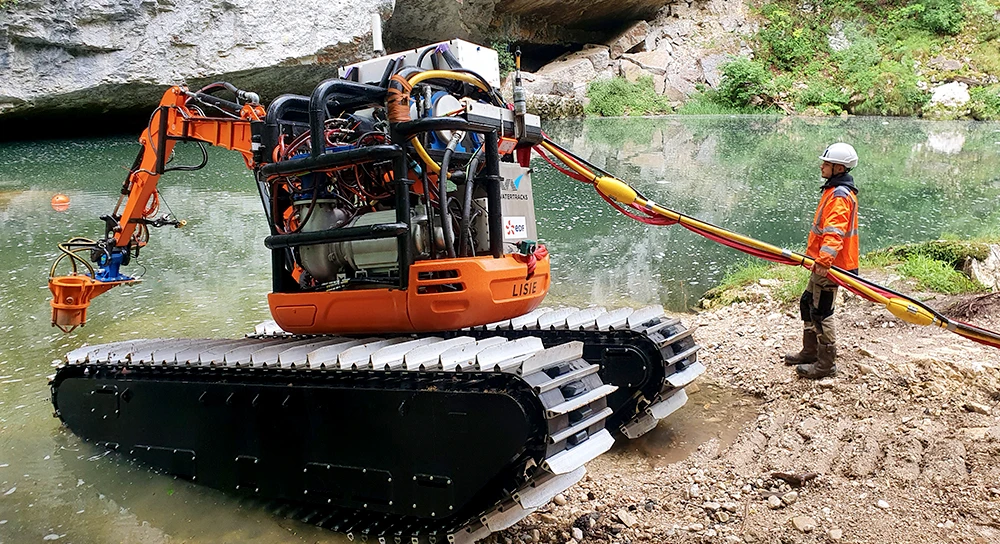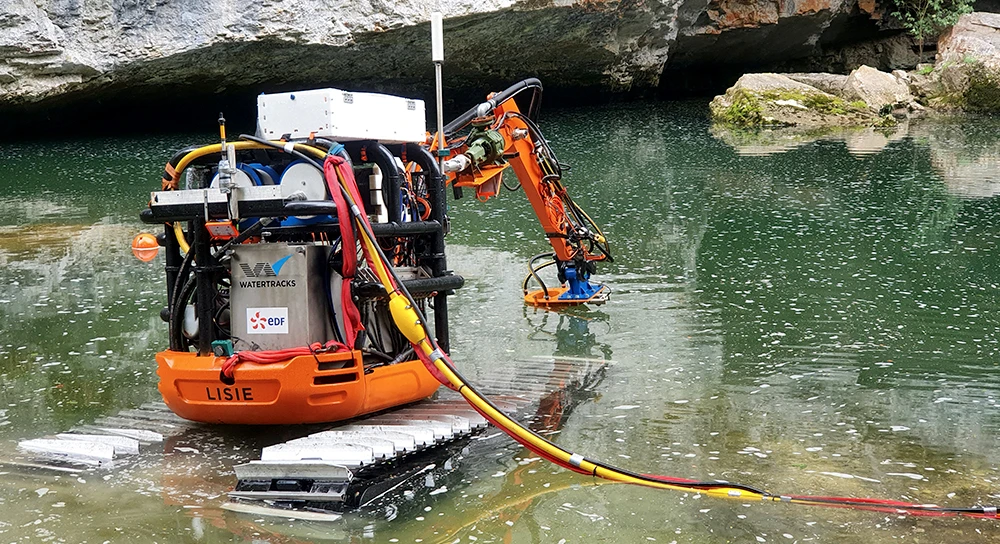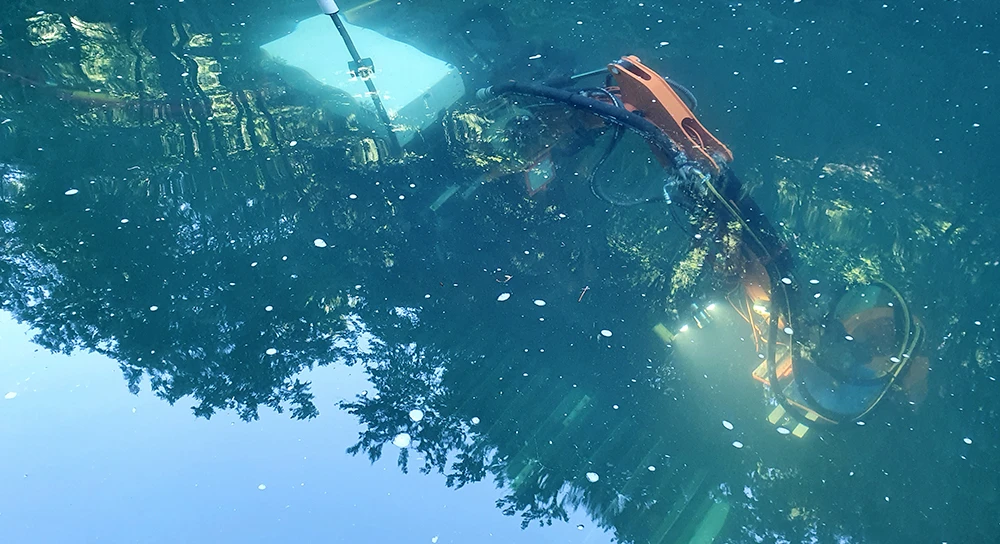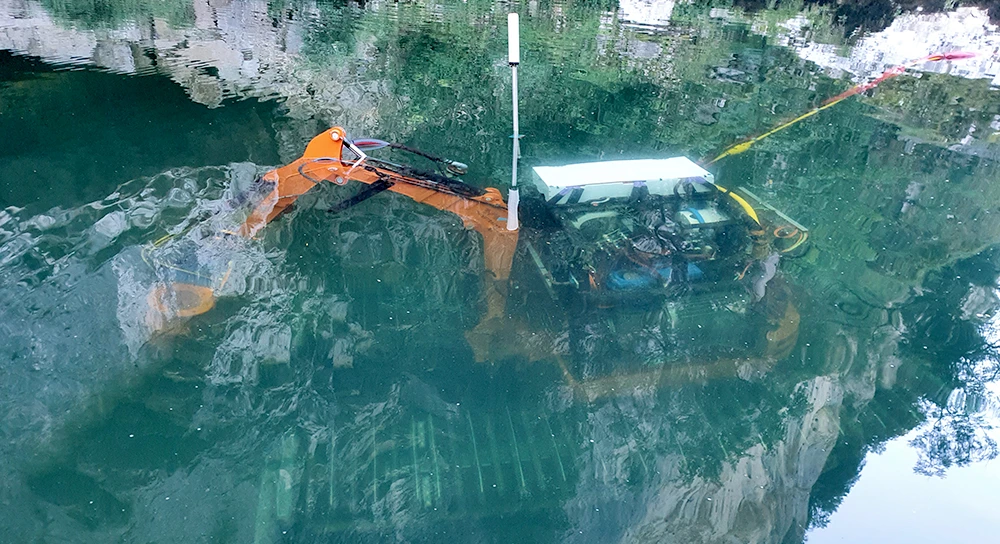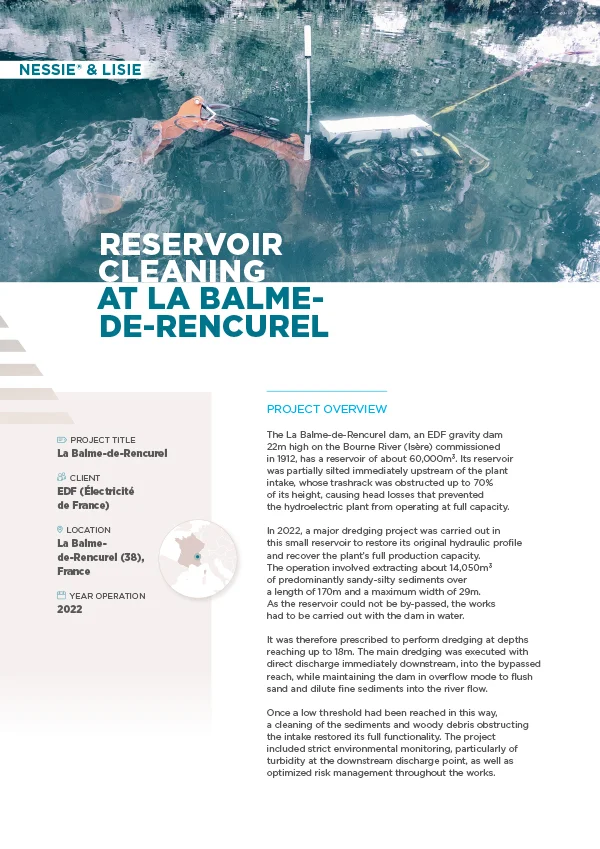NESSIE and LISIE mobilized to clean up water intake
Balme de Rencurel
The NESSIE and LISIE robots, two complementary and innovative underwater dredging solutions, successfully carried out a delicate dredging operation at the bottom of the reservoir of the Balme de Rencurel dam, located in the Isère department.
Carried out under the supervision of Hydrostadium on behalf of EDF, owner and operator of the dam, this operation represents a new stage in the optimization of dam maintenance techniques.
The NESSIE robot was used to remove sand and silt from the bottom of the reservoir, with controlled release immediately downstream of the dam.
LISIE then used an air-lift tool to clear wood and sediment jams from the entire surface of the intake’s bars.
The Balme de Rencurel Dam: A Historic Structure
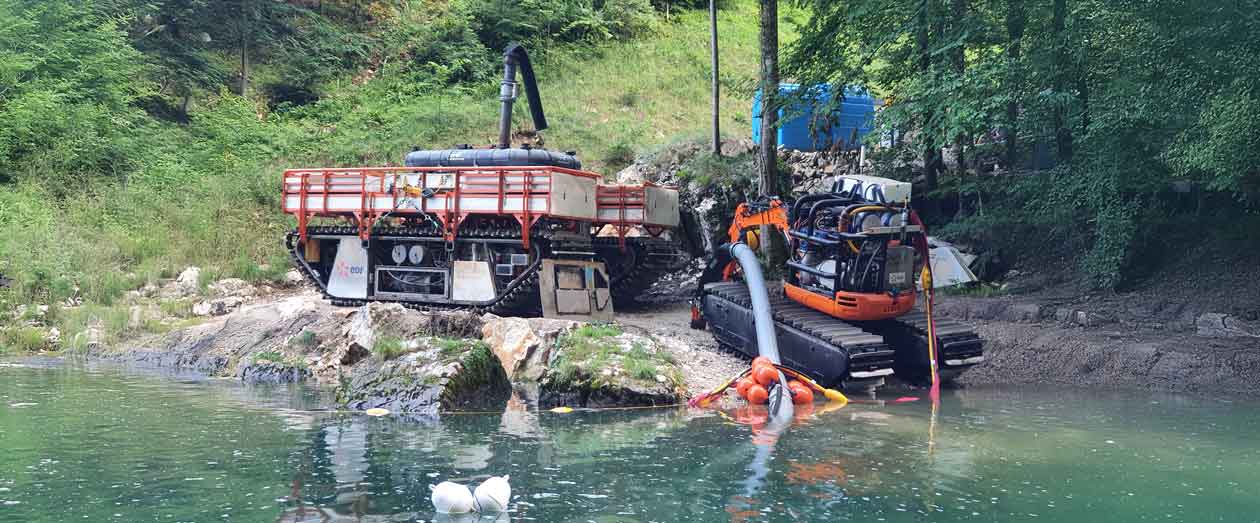
Built in 1912, the Balme de Rencurel dam, also known as the Balme dam, is part of the region’s hydraulic heritage. This 22-meter-high, 38-meter-long gravity dam is located on the River Bourne, in the heart of the commune of Rencurel (Isère, 38680). Its reservoir, with a volume of 60 thousand m³, covers an area of 0.8 hectares, with a catchment area of 226 km².
The dam is a key element in the local hydroelectric network, actively contributing to the production of renewable electricity in the region. The Bourne River, which rises in the Vercors, supplies the dam with water, playing a crucial role in water resource management.
Curage Necessary to Maintain Hydroelectric Performance
Cleaning hydraulic structures is an essential operation to guarantee the efficiency and safety of the installations. Over time, sediment transported by the River Bourne accumulates in the dam’s water intake, reducing storage capacity and potentially disrupting the smooth operation of the infrastructure.
Thanks to its navigation system and its ability to continuously monitor the concentration of dry matter produced, the NESSIE robot was able to carry out mass cleaning of the reservoir. The sand and silt accumulated upstream of the dam were returned to the Bourne, immediately downstream of the dam, in perfect compliance with the environmental thresholds for this watercourse. The formation of new spawning grounds has been observed in the river, much to the delight of the fish.
Equipped with its new high-lift, high-clearance caterpillar tracks, the LISIE robot was able to access the hardest-to-reach areas of the water intake. Its intervention enabled the removal of sediment deposits accumulated on the intake’s bars, without the need to stop power generation or completely empty the reservoir. This represents a considerable saving in time and resources for the operator.
Modern solutions for a century-old dam
Although the Balme de Rencurel dam is over 110 years old, the technologies used for its maintenance continue to modernize. The use of robots such as NESSIE and LISIE, designed to work in an underwater environment with minimal environmental impact, illustrates EDF’s determination to reconcile industrial performance with respect for the ecosystem. Indeed, the dam, although old, remains at the heart of the local hydroelectric production strategy, which makes the most of a clean, renewable energy source.
What’s more, this innovative approach extends the life of hydraulic structures while minimizing disruption to local communities and the natural environment.
